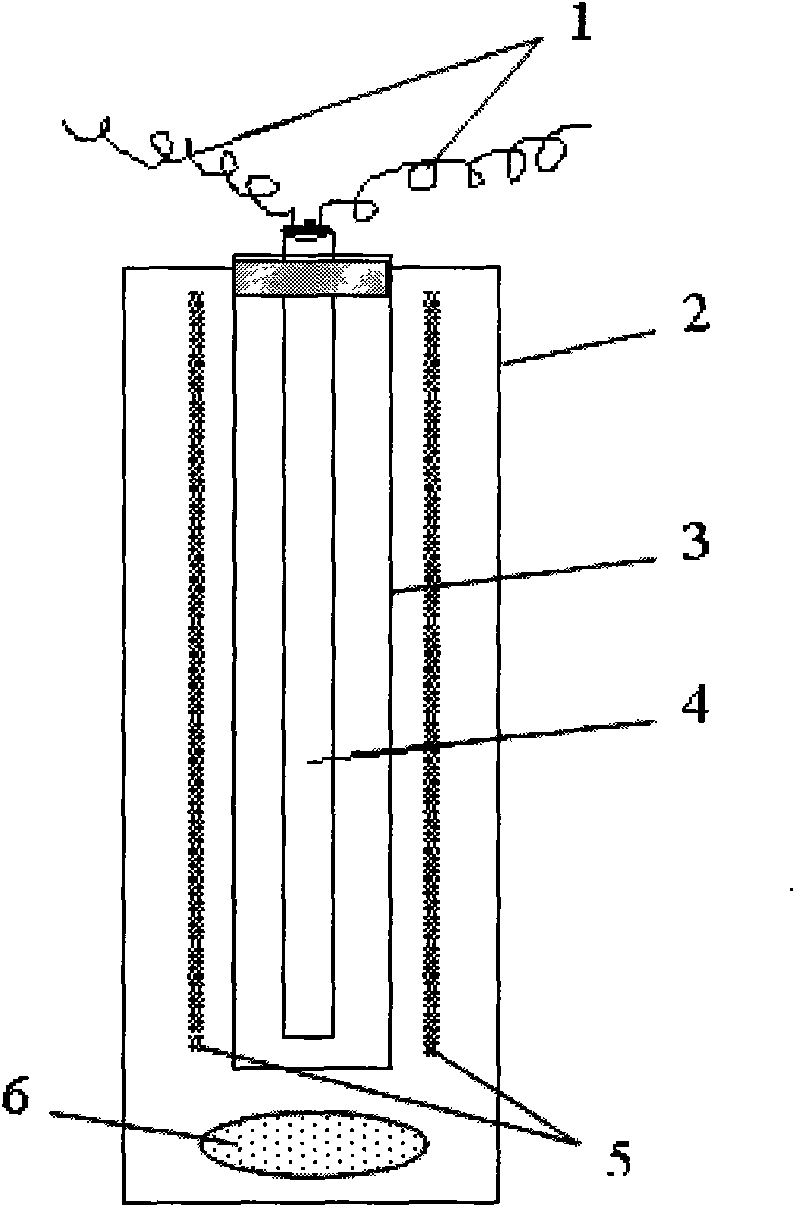Treatment method of textile
A processing method and technology for textiles, applied in textiles and papermaking, fiber processing, synthetic fibers, etc., can solve the problems of high processing cost, high BOD value, long process flow, etc., to adapt to a wide range of pH values, reduce production and emissions , the effect of simple equipment and process
- Summary
- Abstract
- Description
- Claims
- Application Information
AI Technical Summary
Problems solved by technology
Method used
Image
Examples
Embodiment 1
[0021] nanomaterial Al 2 o 3 , CaCO 3 Prepared to a mass concentration of 0.15g L -1 disperse aqueous solution, and adjust the pH of the solution to 7; then add it to the reaction device at a bath ratio of 1:50, respectively as a photocatalytic pretreatment bath for the green textile to be treated.
[0022] The present embodiment adopts batch reaction device to pure cotton woven green fabric (97gm -2 , containing starch and polyacrylate mixed slurry) for photocatalytic pretreatment of nanomaterials. See attached figure 1 , in the batch reactor 2, an oxygen increasing device 6 is installed, and an oxygen increasing pump is used to continuously feed air or oxygen into the stripping bath; a quartz glass tube 3 and a low-pressure mercury lamp 4 are installed, and the present embodiment uses one 8W low-pressure The mercury lamp is an ultraviolet light source, the power supply connection 1 (power supply not shown) is connected to the low-pressure mercury lamp, and the pure cott...
Embodiment 2
[0037] Select nanomaterial CaCO 3 As a photocatalyst, the dosage is 0.1g L -1 , and under the condition that the pH value is 5 and the bath ratio is 1:80, the front and back sides of the cotton green fabric described in Example 1 are respectively subjected to catalytic treatment at room temperature for 8 minutes by the method in Example 1, and then under mild conditions Down (prescription is the same as embodiment 1) through wet state chemical treatment 40min (wherein the blank test of present embodiment is that cotton green fabric is not through nanometer material photocatalytic pretreatment, directly carries out conventional one-bath method desizing, scouring, bleaching wet state chemical treatment). Its concrete steps and other conditions are as described in Example 1.
[0038] Table 2 is the test and comparison results after the pretreatment of the above-mentioned cotton green fabric by the method described in this embodiment.
[0039] Table 2
[0040]
[0041] As c...
Embodiment 3
[0044] Select nanomaterial CaCO 3 As a photocatalyst, the dosage is 0.1g L -1 , and at pH 3.5, the accelerator Al 3+ 6.0×10 -3 mol L -1 , and the bath ratio is under the condition of 1: 80, adopt the method for embodiment 1 to carry out the room temperature catalytic treatment of each 8min respectively to the front and back of cotton green fabric described in embodiment 1, then under mild condition (prescription is the same as embodiment 1) After wet chemical treatment for 60 minutes. Its concrete steps and other conditions are as described in Example 1.
[0045] Table 3 is the test results after the pretreatment of the above-mentioned cotton green fabric by the method described in this embodiment.
[0046] table 3
[0047]
[0048] The data in table 3 shows that under the conditions of this example, adding a small amount of accelerator Al 3+ It can also significantly improve the desizing, scouring and pre-bleaching of cotton fabrics, especially the improvement of th...
PUM
 Login to View More
Login to View More Abstract
Description
Claims
Application Information
 Login to View More
Login to View More - R&D
- Intellectual Property
- Life Sciences
- Materials
- Tech Scout
- Unparalleled Data Quality
- Higher Quality Content
- 60% Fewer Hallucinations
Browse by: Latest US Patents, China's latest patents, Technical Efficacy Thesaurus, Application Domain, Technology Topic, Popular Technical Reports.
© 2025 PatSnap. All rights reserved.Legal|Privacy policy|Modern Slavery Act Transparency Statement|Sitemap|About US| Contact US: help@patsnap.com



